Best hardtail electric mountain bikes – our expert pick of entry level e-MTBs
Our pick of the best hardtail e-MTBs that blend versatility with performance
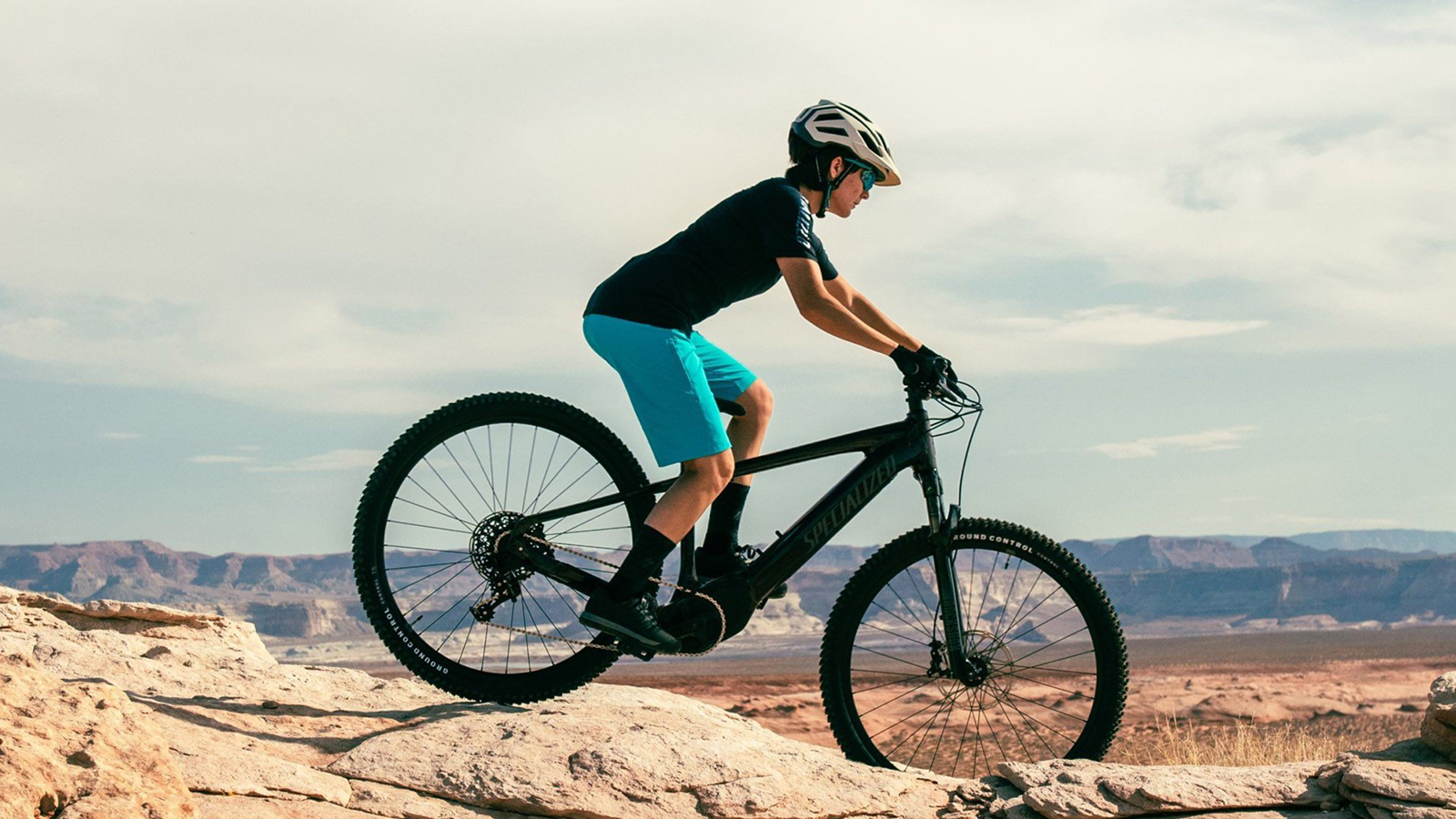
If you’re looking for one electric bike to cover a wide range of riding then one of the best hardtail electric mountain bikes could be the right choice. From heading off into the wilderness for a long day out, to taking the scenic route to work this type of e-bike can deliver. The best hardtail e-MTBs benefit from all the evolution in e-bike tech, with efficient crank-driven motors sitting low in the frame and large capacity batteries sleekly integrated into the downtube.
With 29in wheels and light, high volume tires, a hardtail electric mountain bike can give a more sure-footed ride on gravel tracks than an electric hybrid bike. And as it’s electrically-assisted it won’t feel much slower on the road either.
These bikes are primarily designed for off-road use though, and it is forest fire roads, bridleways, and blue-graded trail center tracks where they work best. Even with a supple suspension fork and wide 2.6in tires, rough rooty and rock terrain is not their natural habitat. Yes, there’s a powerful motor with plenty of punch, but without rear suspension there just isn’t the traction needed for smooth progress when the trail gets challenging. These are the limitations to a hardtail e-MTB, so if more challenging technical trails are your thing, then we’d definitely recommend one of the best full-suspension e-MTBs or best budget e-MTBs.
If a robust go-anywhere e-bike is on your wish list then you’ll find most of these hardtail e-MTBs have fittings for accessories to increase practicality. Many of these brands offer ‘equipped’ versions of these models too, with luggage rack, fenders and a kickstand fitted or an optional accessory package designed to fit the specific model.
So with a change of tires, or the fitting of some functional accessories you can steer a hardtail e-MTB down different paths. Sure there are compromises on more challenging tracks but as an all-terrain machine they are the SUV of the e-bike world. Robust, sure-footed and reliable.
Our experts have assembled a list of the best hardtail e-MTBs for you, with the Trek Powerfly 4 625Wh Gen 4 coming out as our top pick, and the Giant Fathom E+ 2 our best value choice. Skip to the bottom of the article, if you need more help in what to look for when choosing a hardtail electric mountain bike.
Best hardtail electric mountain bikes
Why trust BikePerfect
The quick list
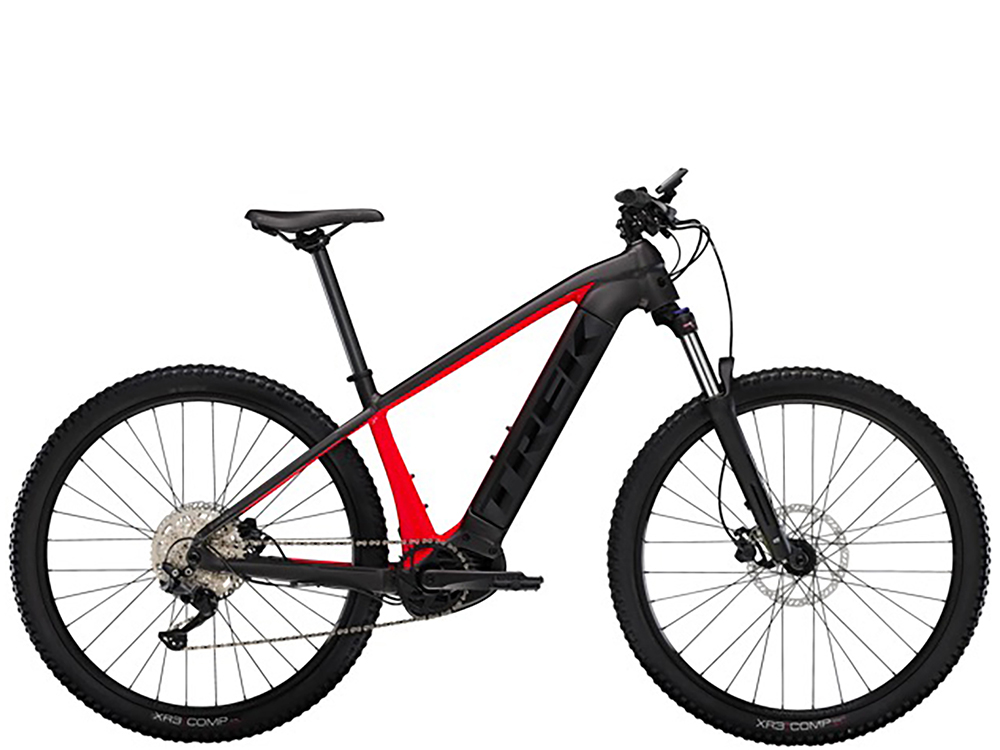
Best hardtail e-MTB overall
A popular, premium e-MTB with a removable 625Wh battery and a powerful 85Nm Bosch motor.
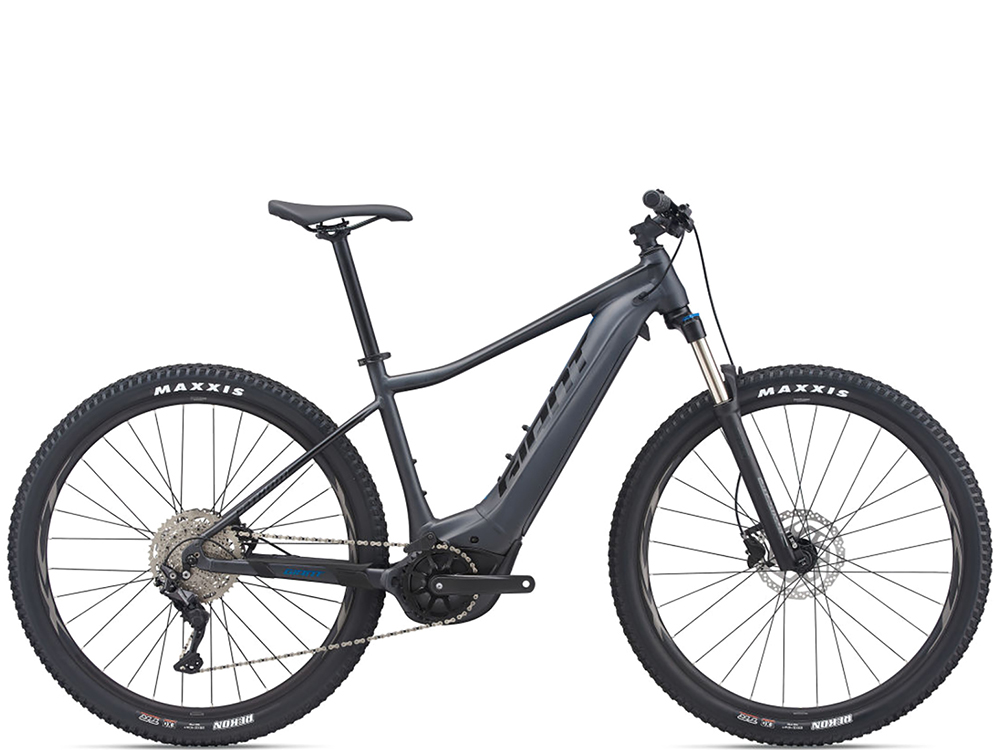
Best value hardtail e-MTB
A great value hardtail e-MTB with a solid spec and a range of five frame sizes.
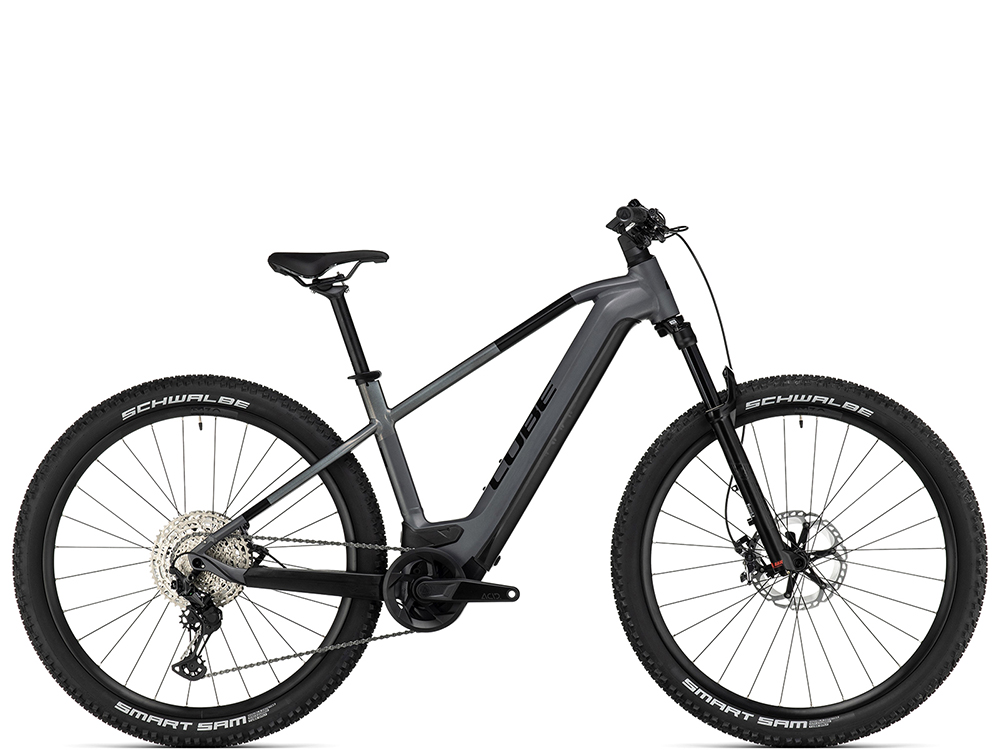
Best hardtail e-MTB for long rides
Huge range potential with one large capacity 750Wh integrated battery, combined with a Bosch 85Nm motor.
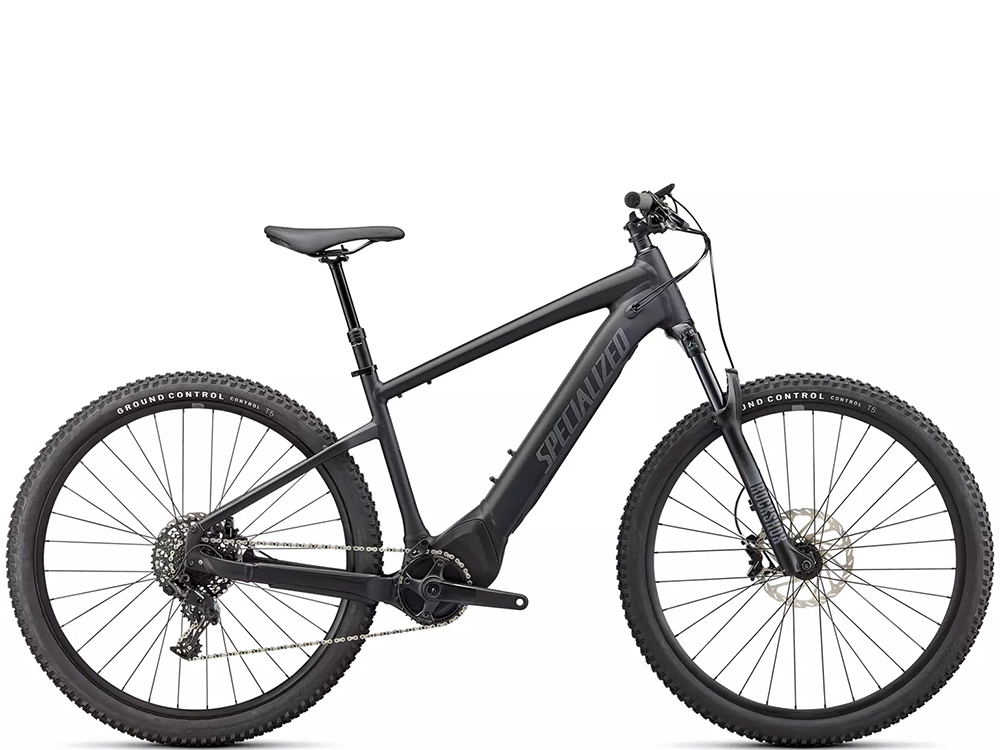
Best easy to ride hardtail e-MTB
A well-equipped, great value hardtail e-MTB with a contemporary look, and a dropper seatpost.
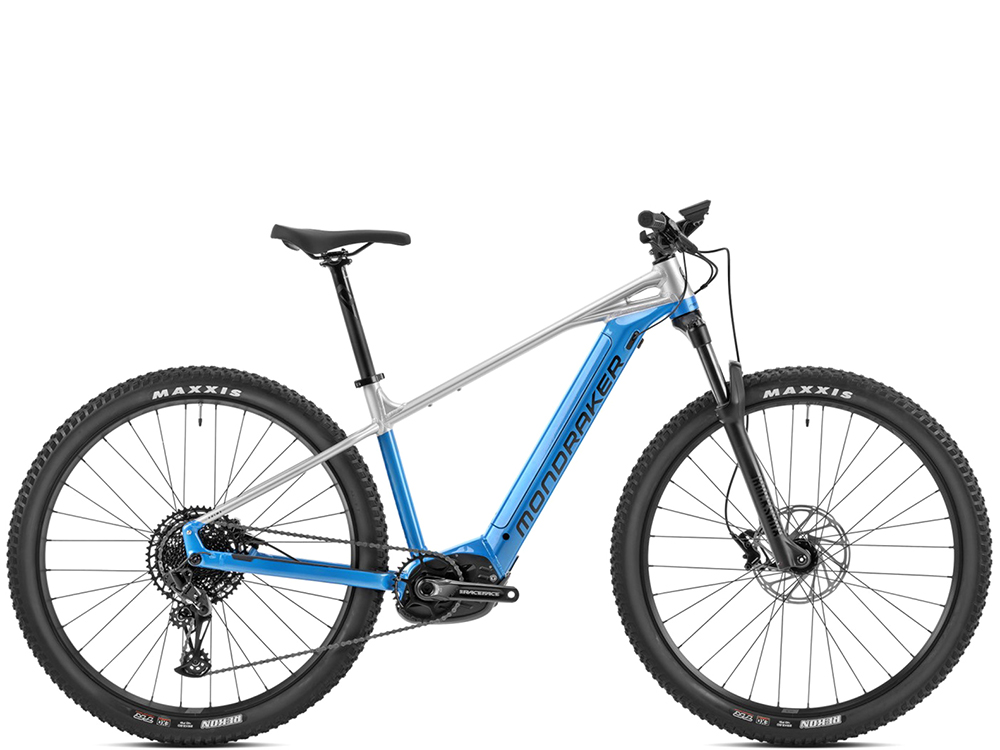
Best hardtail e-MTB for flowy trails
Sleek-looking 29er with a fully integrated Bosch battery, and a 12-speed drivetrain.
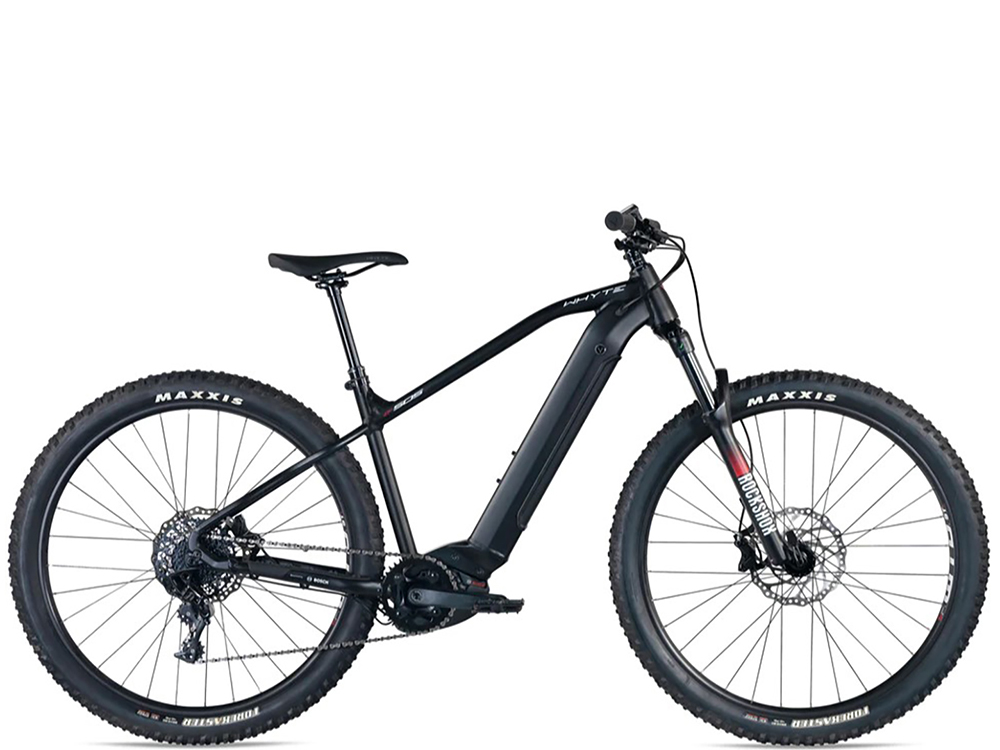
Best hardtail e-MTB for challenging terrain
Great value hardtail e-MTB with capable off-road focused geometry, and a wide size range.
1. Best overall
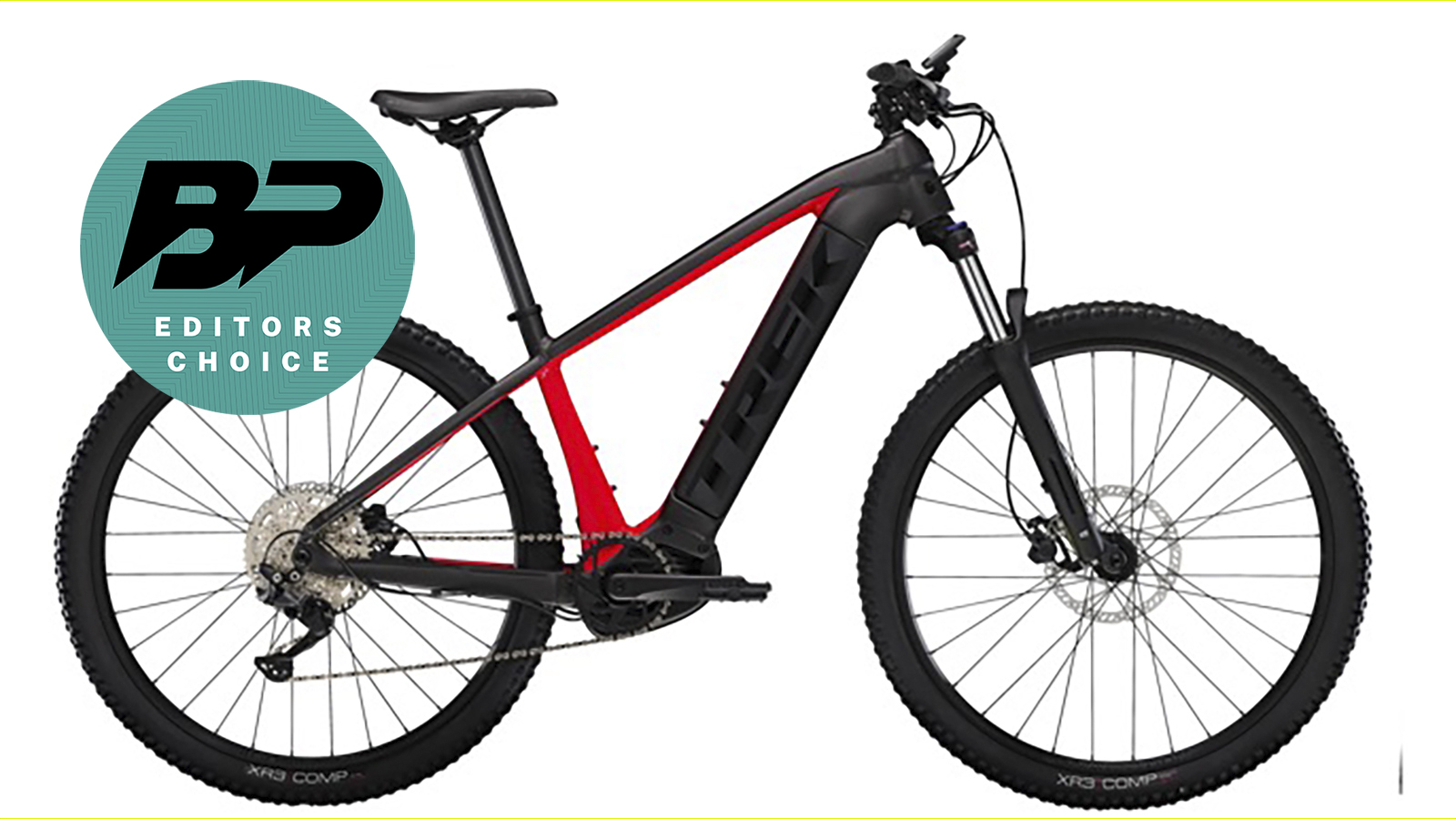
Trek Powerfly 4 625Wh Gen 4
Specifications
Reasons to buy
Reasons to avoid
The Trek Powerfly is now in its fourth generation and stays true to the brand’s values of high-quality construction and finish. All the Powerfly models use the mid mount, crank-driven Bosch Performance CX motor and with 85Nm of torque, providing all the boost needed for a heavier rider, hilly terrain, or both.
The Bosch motor is paired with a large capacity 625Wh battery that’s integrated into the Platinum aluminum frame’s downtube. You can easily unlock and remove the battery, so charging can be done remotely, or via a port in the frame. It’s user friendly and slickly executed.
Wide Bontrager MTB tires are standard, so the Powerfly is off-road ready straight from the box – although upgrading to a dropper seatpost will help boost confidence in rough terrain and add convenience if the bike is shared by riders of different heights. The 10-speed drivetrain gives a slightly more limited gear range, so first gear is not as low as on some e-MTBs at this price point – a compromise on the very steepest climbs.
Versatility is still a key element on the e-bike, with mounts for two bottle cages, a rack, fenders and kickstand. The Powerfly can make a purposeful multi-surface tourer or bikepacking machine.
2. Best value
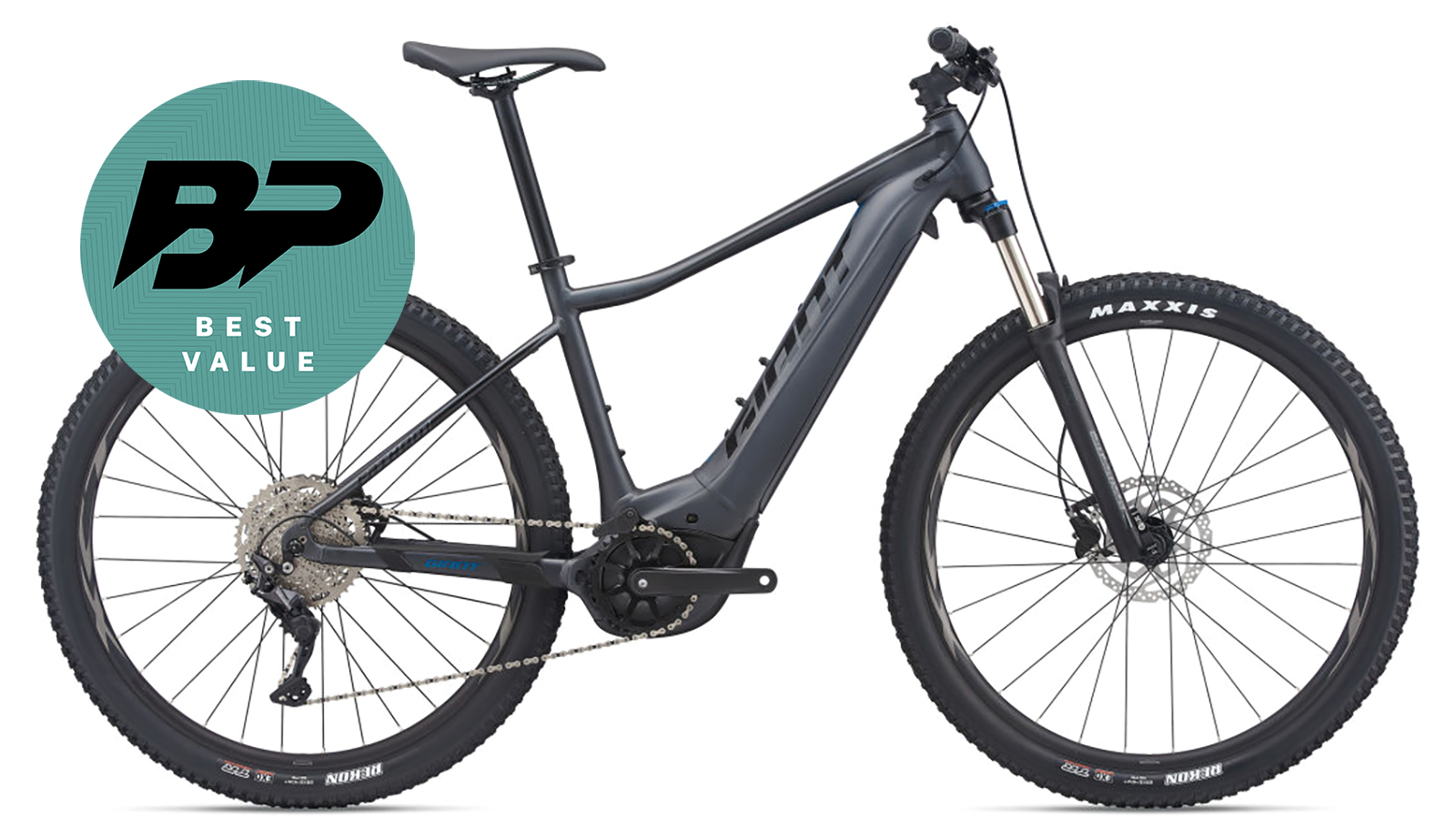
Giant Fathom E+ 2
Specifications
Reasons to buy
Reasons to avoid
Giant is well known for producing great value bikes with a solid spec and this Fathom E+ 2 hardtail eMTB is a great example of this. The brand has a longstanding partnership with Yamaha, producing its motors and drive systems specifically for its range of e-bikes. The motors have proved reliable, with performance that’s a match for Bosch, Brose and Shimano systems. The 70Nm SyncDrive motor on this Fathom E+ 2 is paired with a 500Wh battery and uses an easy-to-read RideControl Dash display.
The Fathom E+ 2 is available in five frame sizes but all use 29in wheels, whereas brands such as Trek and Cube use 27.5in wheels on smaller frame sizes. The frame does have some neat touches though, with a bump stop under the downtube to prevent full rotation of the fork. There are also two sets of bottle cage mounts on the larger frame sizes – handy for longer rides in hot weather, or for mounting a mini-pump or folding lock.
3. Best for long rides
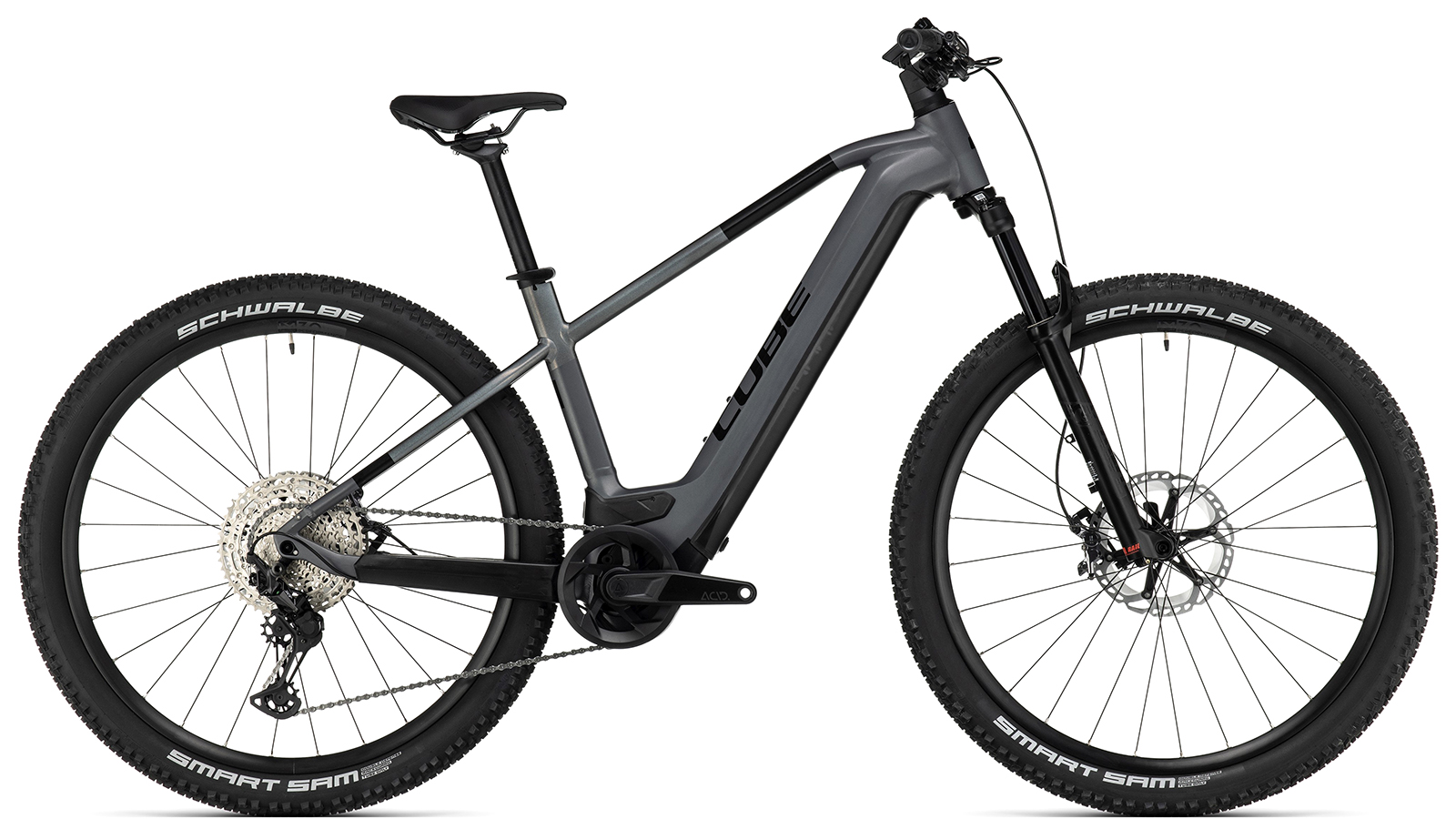
Cube Reaction Hybrid SLT 750
Specifications
Reasons to buy
Reasons to avoid
Cube has a long history of producing e-bikes and e-MTBs, longer than most brands in fact, and this shows in its extensive range of models. The relationship with Bosch has been there since the beginning too. You’ll find motors and batteries from this German manufacturer on the majority of Cube’s electric models, and a comprehensive spec of Shimano drivetrain and braking components too.
This Reaction Hybrid SLT 750 uses (as the name suggests) Bosch’s latest and largest capacity 750Wh battery that’s integrated into the frame’s downtube, resulting in a sleek looking frame. The battery is integrated but removable, so you can charge the battery on or off the bike but with its higher-than-average capacity you won’t be doing it that often.
Combined with the high-spec Bosch Performance CX (85Nm) motor, this battery gives a huge range. Long days out, regardless of the surface or gradients are a given, even if loaded with luggage or with frequent use of the higher assistance levels.
This Cube may look expensive for a hardtail e-MTB but the specification is high. It’s a full house of Shimano XT for the wide range 12-speed drivetrain and powerful four-piston brakes. As with the Trek Powerfly, a dropper seatpost would be our only potential upgrade.
4. Best easy to ride
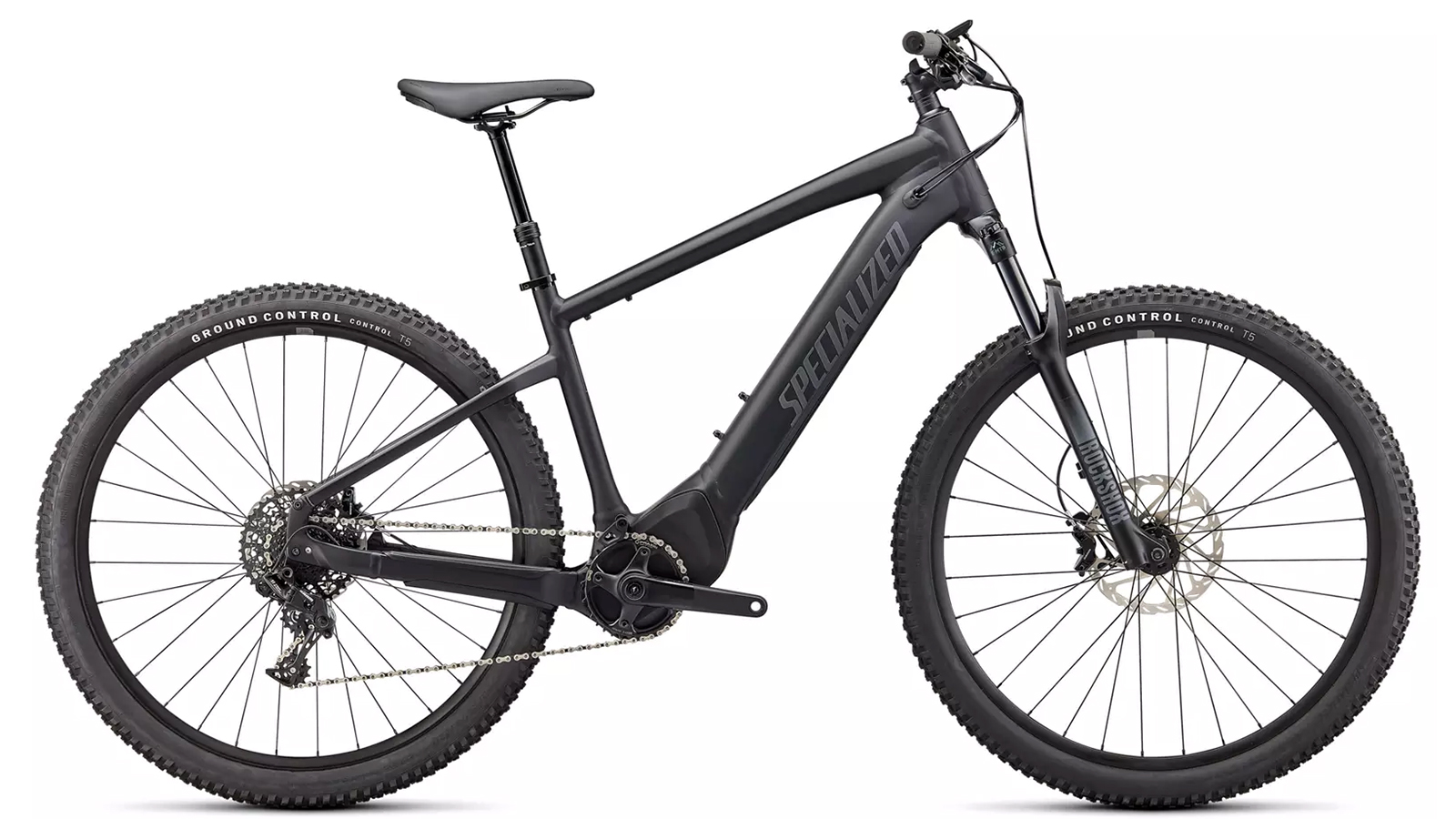
Specialized Turbo Tero 4.0
Specifications
Reasons to buy
Reasons to avoid
Specialized introduced the Turbo Tero in 2021 to replace the Turbo Levo hardtail. With a new frame and improved components, the Turbo Tero is now a more compelling proposition, especially when compared against key sellers in its category, such as the Trek Powerfly.
The Tero’s frame, like all the hardtail e-MTBs in this buyer’s guide, is aluminum. It’s built around a 110mm travel suspension fork and sports a heavily sloping top tube, giving improved stand over clearance as well as a more contemporary look. Seatstay fittings for a ring-style wheel lock, front rack mounts and under top tube accessory mount are neat touches not always found on this style of bike.
The battery mounting has been revised on the Tero, an area that was compromised on the Turbo Levo hardtail. It’s now easily removable from the downtube and is lockable too. This Turbo Tero 4.0 uses a large 710Wh battery, whereas the cheaper 3.0 model compromises with only a 530Wh capacity.
When it comes to specification, Specialized has included a dropper seatpost (handy in busy traffic as well as rough off-road terrain) and tubeless-ready tires and rims. The only real compromise is the 11-speed transmission with a limited gear range.
5. Best for flowy trails
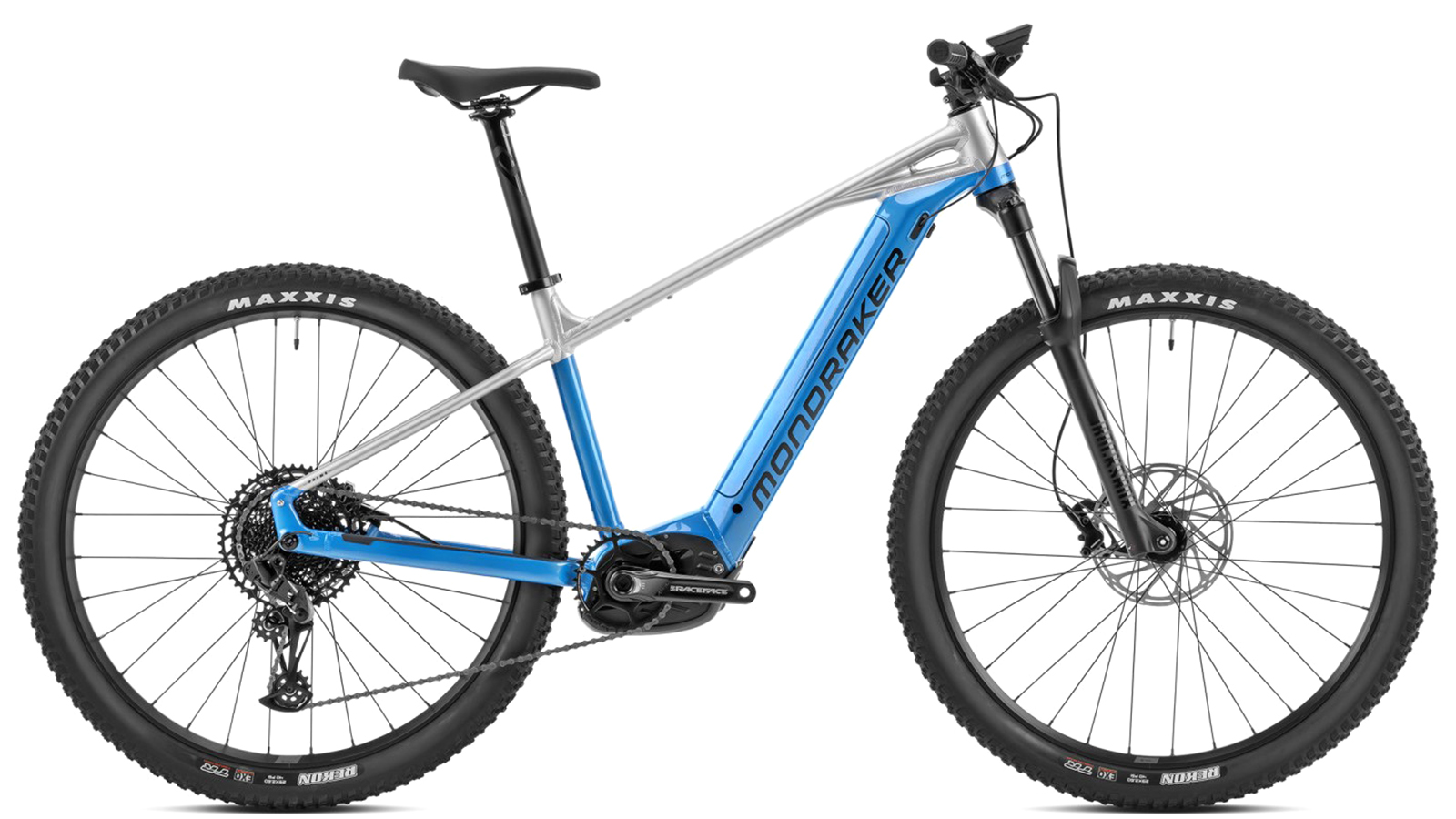
Mondraker Prime 29
Specifications
Reasons to buy
Reasons to avoid
Spanish brand Mondraker pushed frame design forward a decade ago with its Forward Geometry theory, increasing reach measurements and fitting very short stems. Although this thinking is more relevant on trail and gravity-focused mountain bikes, Mondraker applies it to this hardtail e-MTB. Simply put, it places the rider in a more efficient and balanced position for tackling technical off-road terrain. The geometry isn’t extreme though, so for fast, sweeping tracks the Prime will be an engaging yet well-mannered ride. It doesn’t mean a compromise for mixed-surface or less challenging terrain, so the Mondraker Prime still makes a great all-rounder.
With the popular Bosch Performance CX motor and a 625Wh battery, there’s plenty of power, punch and range for long rides in hilly terrain. The 12-speed drivetrain has a wide gear range, with a lower first gear than many comparable bikes in this category.
6. Best for challenging terrain
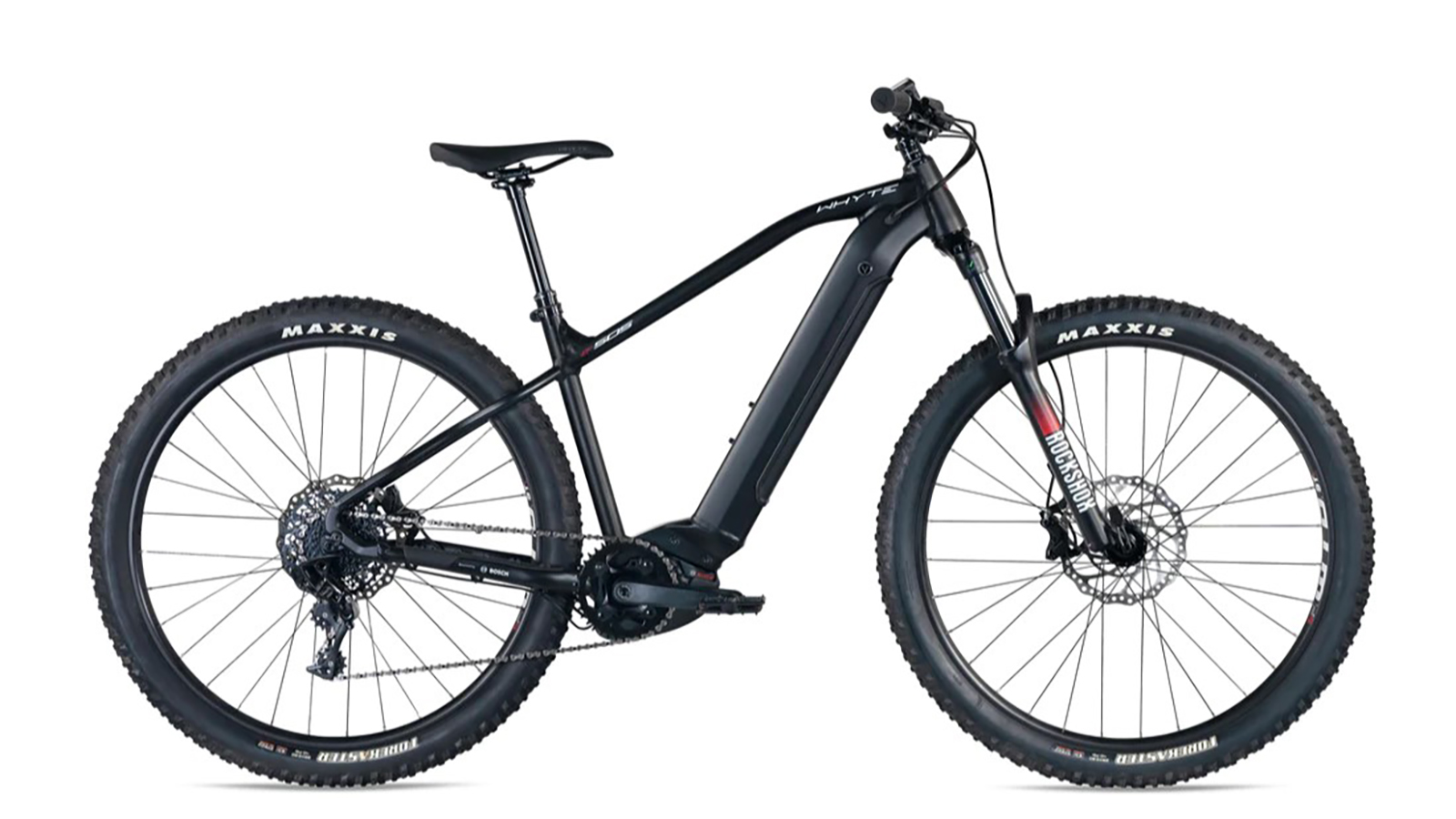
Whyte E-505
Specifications
Reasons to buy
Reasons to avoid
Whyte has a reputation for designing mountain bikes with up-to-date, progressive geometry and sizing, with this thinking applied across all of its models. Even more recreation-focused bikes such as this hardtail e-MTB don’t miss out. The E-505 is the top spec bike in Whyte’s hardtail e-MTB lineup and much of its frame architecture mirrors that of the brand’s higher performance self-assisted models such as the 529 and 629. This alone makes the E-505 stand out from the other hardtail e-MTBs in this guide.
When it comes to the bike’s geometry, the slack head angle and long wheel base boost stability and confidence in tricky terrain. The stout RockShox 35 fork, wide handlebar, short stem and long stroke dropper seatpost enhance this further, making the E-505 a sound choice for riders with a preference for more technical trail riding.
The powerful Bosch Performance CX motor dishes out 85Nm of torque, so hills can be dispatched with ease although the 500Wh battery will give you less range than those e-MTBs with a 625Wh or 700Wh+ capacity.
This bike isn’t an ideal choice for shorter riders though, as it’s only available in three frame sizes (M, L and XL), all with 29in wheels.
How to choose the best hardtail electric mountain bikes
How much should I spend on a hardtail e-MTB?
Although there are plenty of budget options for all types of electric bike, the versatility of a hardtail e-MTB should mean you get great value out of your investment. It's a useful ‘all terrain bike’ that can work as a reliable commuter, fitness machine or off-road explorer. With that in mind it’s worth investing in a quality hardtail e-MTB that is reliable, well built and from a reputable brand with good spares back up. A hardtail e-MTB that fits this criteria will usually be $3,600 (around £3,000) and above and will benefit from a larger capacity battery, a motor with more punch and a higher components specification.
Are mid-drive motors better than hub motors?
Hub motors – usually on the rear wheel – are found on budget bikes or those with a focus on weight saving. We’d generally avoid a hub motor on a hardtail e-MTB, where weight distribution will be compromised along with a lack of punch and power. A motor and battery are heavy components, so mid-drive crank options that are mounted as low in the frame as possible and centrally between the wheels, will result in a more stable and better handling bike.
When it comes to the electronics, many bike workshops will turn away an electric bike with a motor system they can’t service, so stick with one of the established, premium brands. Bosch, Shimano, Yamaha/Giant and Brose all have a solid history of reliability and performance from crank-driven drive systems. A dealer needs to be able to diagnose and update a system to fix an issue and maintain performance.
How much torque do I need?
The bikes we’ve featured in this guide have motors with at least 70Nm of torque, with the higher spec models rated at 85Nm. If you’re a heavier rider, or carrying a load (for touring or commuting), then we’d go for a motor with 85Nm. These performance-orientated motors may be slightly noisier than the lower powered units but they have the grunt to get you up most of the hills – if you’ve got the traction. You can’t upgrade a motor’s power once you’ve bought it, so consider who is going to ride the bike and what terrain it will be used on.
What about battery capacity – is bigger better?
Just like DIY power tools, having a small battery means you’ll be forever charging a battery or keeping a sharp eye on what's left ‘in the tank’. These days a small battery is now 500Wh, with larger (but heavier) 625Wh and 700Wh batteries giving a much longer range or needing less frequent charging.
Range can vary with weather conditions, rider weight, luggage carried, the road/track surface and even the type of tire used, so most brands don’t publish these figures. Bosch does have a Range Assistant calculator tool on its website where you can change the variables to see the approximate distance you’ll get from your battery and motor.
Batteries are expensive and although some bikes are designed to take an additional range extender unit, it’s better to go for a larger capacity battery to start with. We’d take a compromise elsewhere on the bike (a more basic display or controller for example) and put the funds into a model with a larger battery. If you fit a size XS or S size bike then check the spec as these smaller frames (with shorter downtubes) can often only fit a smaller capacity battery.
Do I need a carbon frame?
Carbon frames do look slick but the weight saving is marginal on a hardtail e-MTB that weighs in between 23 and 25kg. All the hardtail e-MTBs listed here are built around an aluminum frame. We'd prioritize a more powerful motor, larger capacity battery and a higher quality suspension fork (especially if your riding has an off-road focus) on an aluminum frame, over a more basic spec on a carbon frame. If a hardtail e-MTB has a carbon frame at a bargain price, have a look for the potential spec compromises.
What wheel size should I go for?
The default wheel size on all these hardtail e-MTBs is 29in. They roll over rough ground well and carry speed efficiently. However, when paired with a smaller frame size there can be issues such as an overly high handlebar and compromised top tube standover height.
For shorter riders we’d recommend 27.5in wheels and both Trek and Cube spec their smaller frame sizes with this wheel size. In contrast to this, the Whyte E-505 is only offered in three sizes (medium being the smallest), all with 29in wheels, making this a bike more suited to a taller rider.
Are there any upgrades that can help make an hardtail e-MTB more trail capable?
If your bike comes with basic tires and you want to do more trail riding, you can upgrade its grip capabilities by going for one of the best e-MTB tires – particularly on the front wheel. Better tires come with superior rubber compounds that will improve grip and bike stability. Quality tires with bigger lugs will also help give better grip in wet conditions when minimal traction can be an issue and on roots and rocks which can be very slippery.
We'd also definitely recommend setting your tires up tubeless too as without suspension, the rear tire on a hardtail e-MTB is particularly puncture prone.

Not long after buying his first mountain bike, a Diamond Back, Sean left school and jumped straight into a job in a bike shop. That was 1988 and it was meant as a stop-gap while he decided on his future career path but 35 years later, he’s still working in the industry and loving every day of it.
He’s a singletrack fan, whether fast and flowing or tight and rooty, so his go-to local trails at the Forest of Dean hit the spot. The wilderness of mid Wales is also a frequent destination for Sean, where he explores deserted backroads on his touring bike or spends a full day in the hills on fatter tires.
Current rides: Stooge Scrambler, Singular Gryphon, Specialized AWOL touring bike
Height: 188cm
Weight: 87kg
- Rich OwenEditor, BikePerfect
